Frogs, often overlooked in the wildlife heirachy, boast an arsenal of incredible traits that seem to defy the boundaries of biology. Whether it’s through unique adaptations or survival strategies that tiptoe on the edge of magic, these amphibians showcase nature’s ingenuity in its purest form. Prepare to be astounded as you dive into the fascinating world of frogs and their unreal capabilities.
1. The Glass Frog’s Invisible Cloak
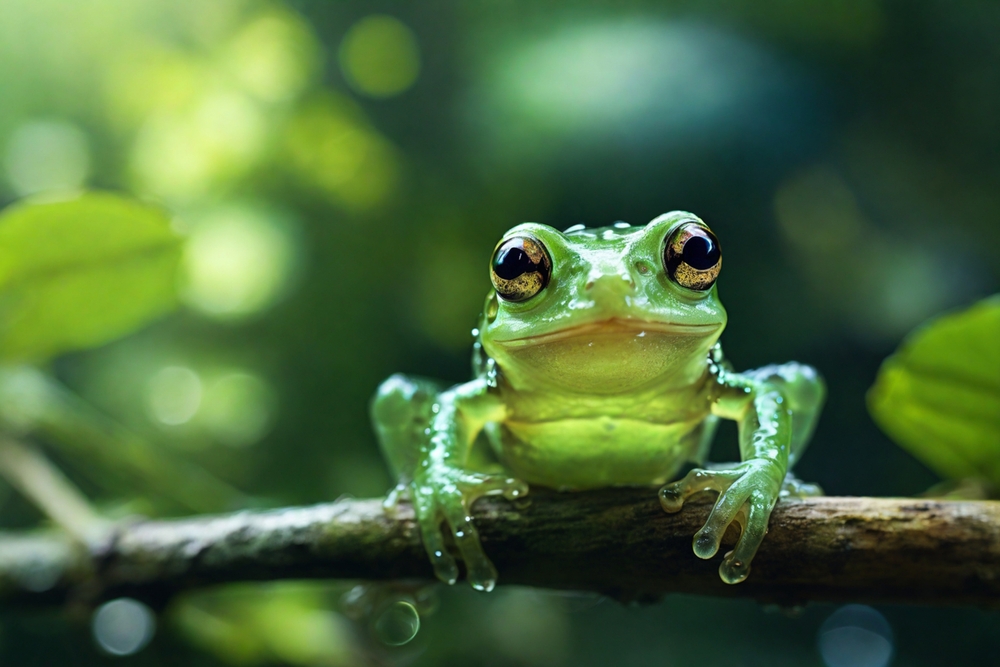
Imagine a frog that seems as if it’s borrowed a page from a wizard’s spellbook—introducing the glass frog, whose skin is so translucent that its organs are visible. This remarkable adaptation allows it to blend seamlessly into its leafy environment, fooling predators and curious onlookers alike. The real spectacle is witnessing the heart beat in rhythm with the creature’s subtle movements, a rare glimpse into the inner workings of life. Scientists from the University of Bristol have studied these frogs, noting how their transparency provides a crucial edge in evading detection.
Intriguingly, this transparency isn’t just skin-deep. Glass frogs possess the ability to control the transparency of their skin, adjusting it to suit their environment—an adaptation that’s as much about chemistry as it is about survival. When resting, their transparency increases, while during periods of activity, they become less see-through, balancing the need for camouflage with the need for functionality. This extraordinary capability raises questions about the evolution of transparency in nature, as well as the potential for similar adaptations in other species.
2. The Wood Frog’s Cryogenic Abilities
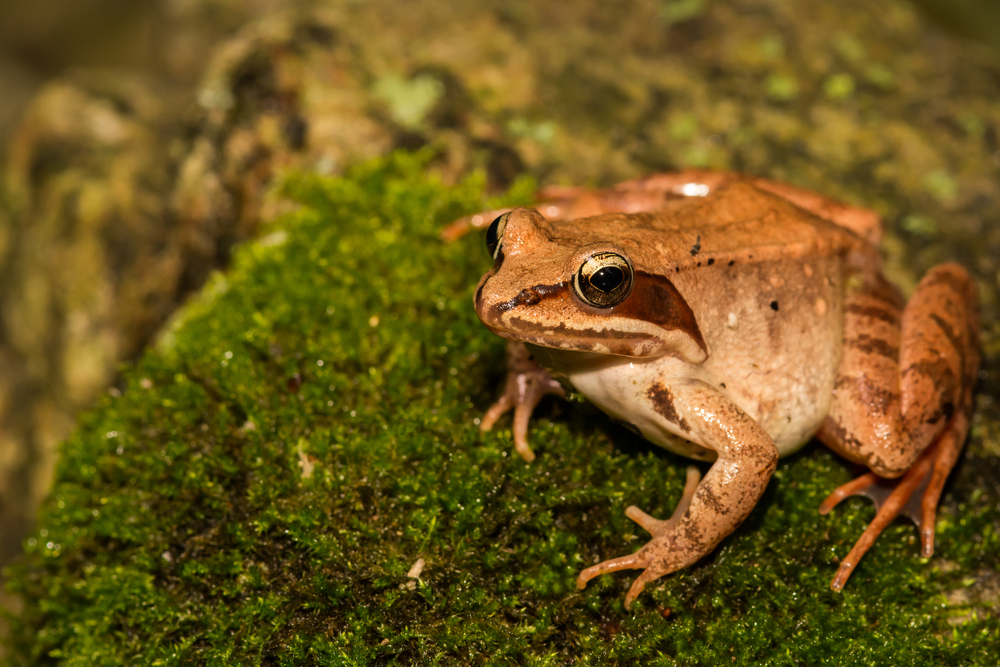
In the world of frogs, the wood frog takes the crown for ultimate survivalist with its ability to withstand being frozen solid. Come winter, these frogs endure freezing temperatures by entering a state that mirrors suspended animation. Their bodies produce a special type of antifreeze, which prevents ice crystals from forming in their cells and causing damage. While their hearts stop and their breathing pauses, these resilient amphibians remain alive, waiting for the spring thaw to reanimate them.
As the temperatures rise, the wood frog thaws out and resumes life as if nothing happened. This extraordinary capability to endure and recover from freezing conditions could offer insights into medical advances, particularly in organ preservation and transplant techniques. By unlocking the secrets of the wood frog’s cryogenic survival, scientists hope to uncover new frontiers in human healthcare. The wood frog stands as a testament to nature’s ability to defy the constraints of life and death.
3. The Harlequin Toad’s Colorful Defense
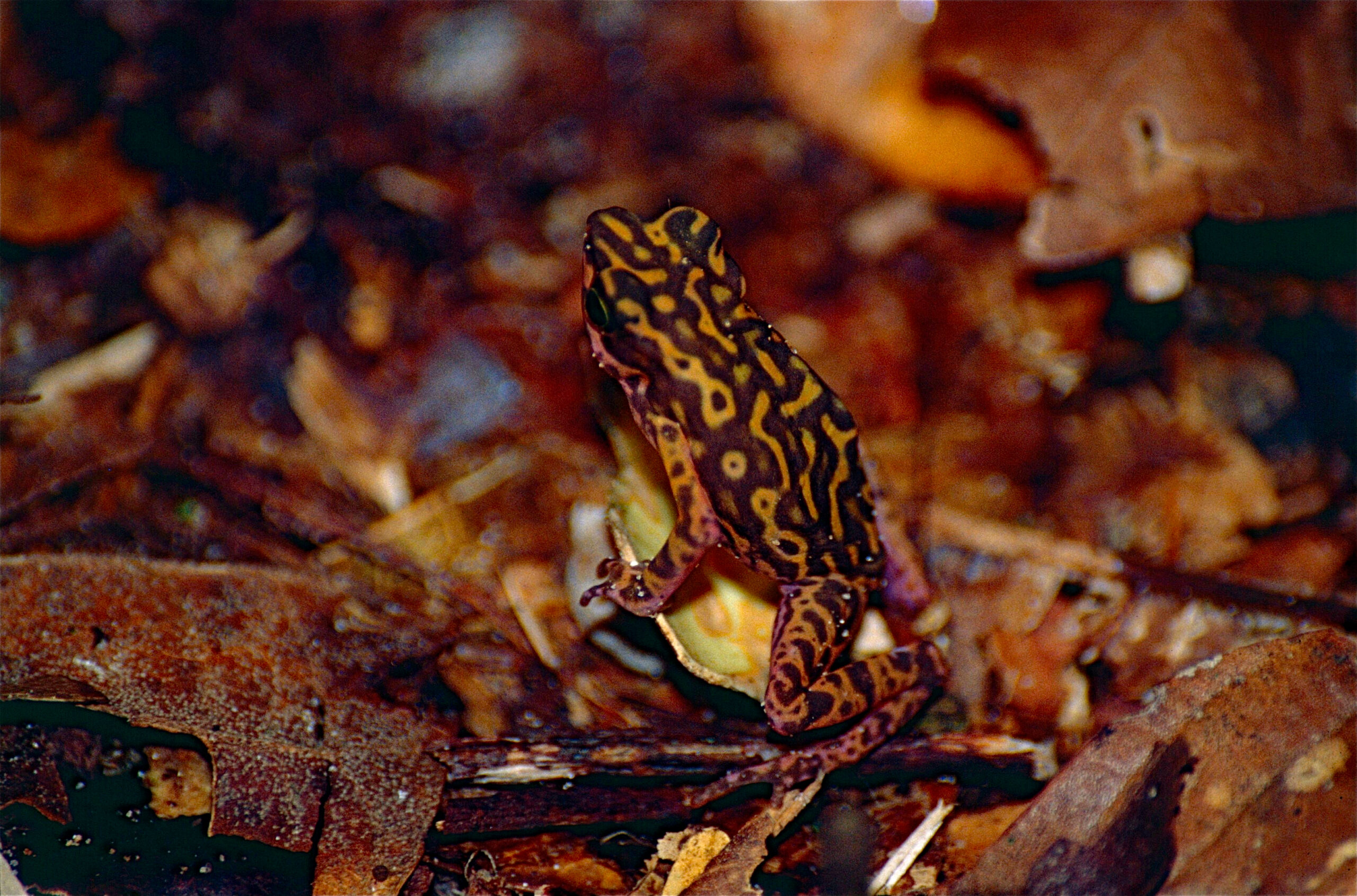
With a palette that rivals an artist’s canvas, the harlequin toad uses its vibrant colors to communicate a clear message: danger. These striking hues signal their toxicity, a defense mechanism against would-be predators. The toxins in their skin can deter even the most determined of hunters, making them a fascinating example of chemical warfare in the animal kingdom. Their dazzling colors serve as both a warning and a testament to the diversity of adaptation strategies in nature.
But there’s more to the harlequin toad than its toxic allure. These creatures are finely tuned to their environment, relying on specific climatic conditions to thrive. Their habitats are often narrow ecological strips, making them vulnerable to environmental changes. As climate change and habitat destruction continue to pose threats, the harlequin toad’s future hangs in the balance, emphasizing the delicate interplay between adaptation and survival.
4. The Waxy Monkey Frog’s Skincare Routine
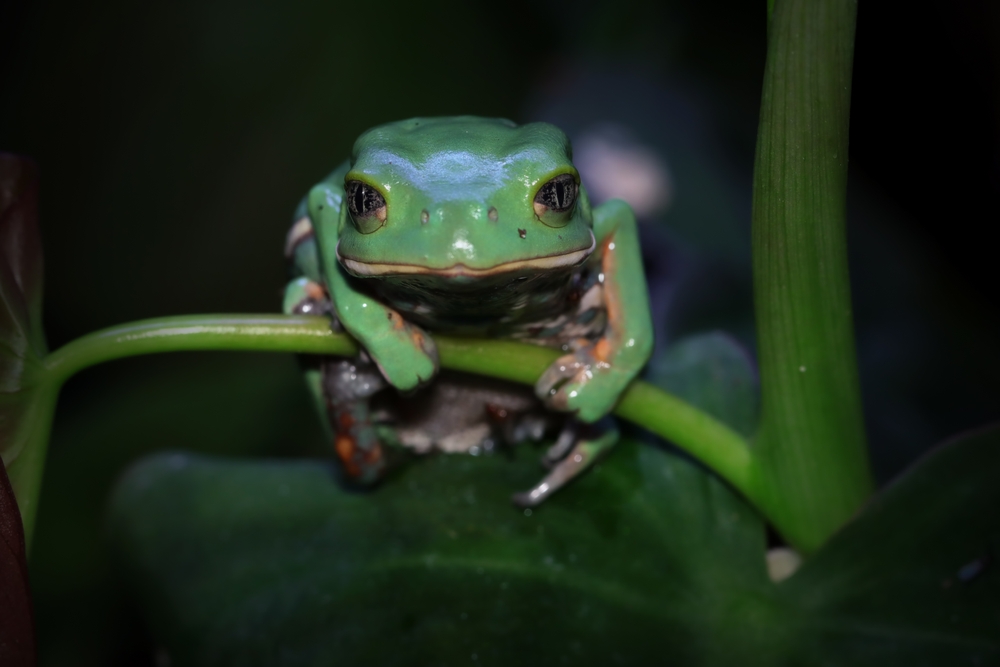
If ever a frog had a beauty secret worth knowing, it would be the waxy monkey frog. These frogs secrete a waxy substance that they spread over their bodies, effectively acting as a moisturizer and sunblock. This adaptation not only protects their skin from dehydration under the harsh sun but also deters parasites. A study conducted by researchers at the University of São Paulo highlights how these secretions are rich in peptides, offering antimicrobial properties.
The waxy coating isn’t just a skincare marvel; it underscores the frog’s adaptability to its arid environment. By mastering this unique form of self-care, the waxy monkey frog ensures its survival in places where water is a precious commodity. This ability to maintain hydration and health in challenging environments showcases the evolutionary ingenuity of frogs. Additionally, the compounds in their secretions are being studied for potential pharmaceutical applications, proving once again the untapped potential of nature’s innovations.
5. The Reed Frog’s Gender Bending
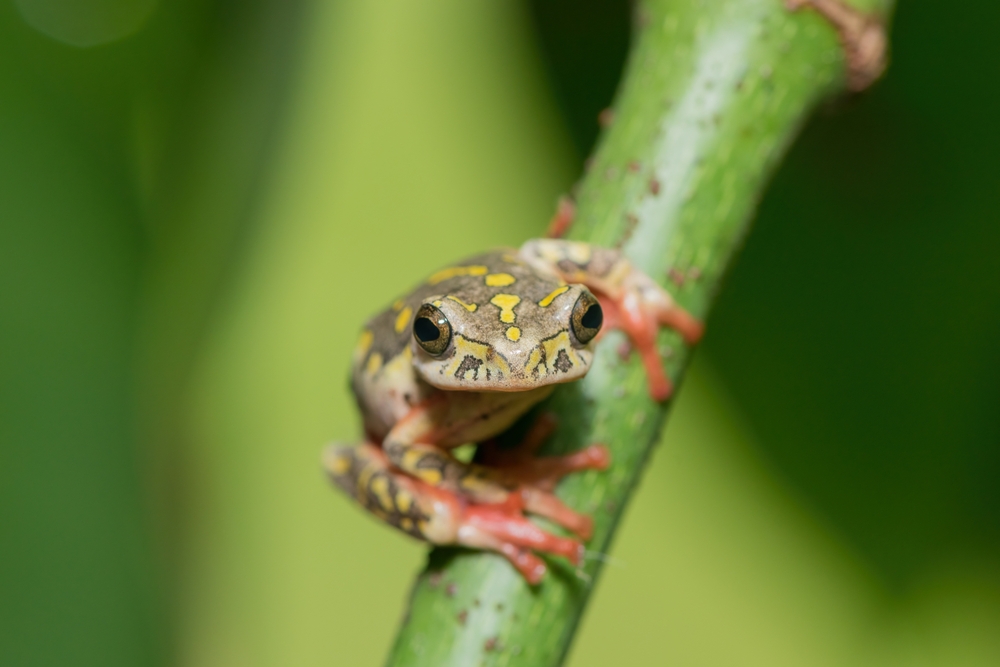
In the realm of frogs, the reed frog is a master of gender fluidity, capable of changing its sex in response to environmental pressures. This ability to switch from female to male (or vice versa) is a strategic adaptation that ensures the continuation of their lineage. When the population skews heavily towards one gender, some frogs will undergo a hormonal transformation to restore balance. This remarkable flexibility offers insight into the complexity of biological sex and reproduction in the animal kingdom.
This gender-bending capability isn’t just a fascinating quirk; it plays a crucial role in the survival of species facing environmental challenges. By adapting to their social structure, reed frogs can maximize reproductive success and genetic diversity. These transformations highlight the dynamic nature of life and the extraordinary lengths organisms will go to ensure their survival. Such phenomena prompt us to reconsider the rigid definitions of gender and reproduction in nature.
6. The Flying Frog’s Aerial Acrobatics
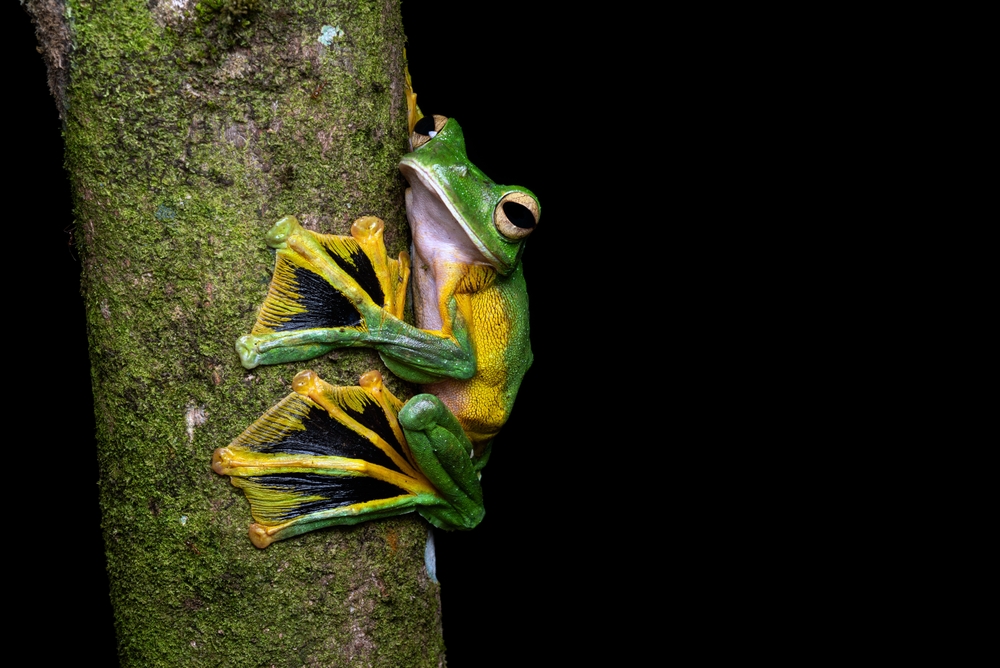
Take to the skies with the flying frog, whose webbed feet and elongated limbs allow it to glide gracefully between trees. These frogs are not just leapers but aerial acrobats, capable of traveling distances of up to 15 meters in a single bound. Their adaptations offer a strategic advantage, providing rapid escape routes from predators and new territories to explore. A study published in the journal Integrative and Comparative Biology delves into the biomechanics of their gliding abilities, offering insights into the evolution of flight.
The flying frog’s mastery of the skies isn’t solely for survival; it’s also a testament to the diversity of locomotion strategies among amphibians. By exploiting the vertical dimension of their environment, these frogs open up a new world of ecological opportunities. This evolutionary leap showcases how life can stretch beyond its terrestrial boundaries, adapting to the air with ingenuity and grace. As you watch a flying frog in motion, you’re reminded of the limitless potential of adaptation in the natural world.
7. The Golden Poison Frog’s Lethal Touch
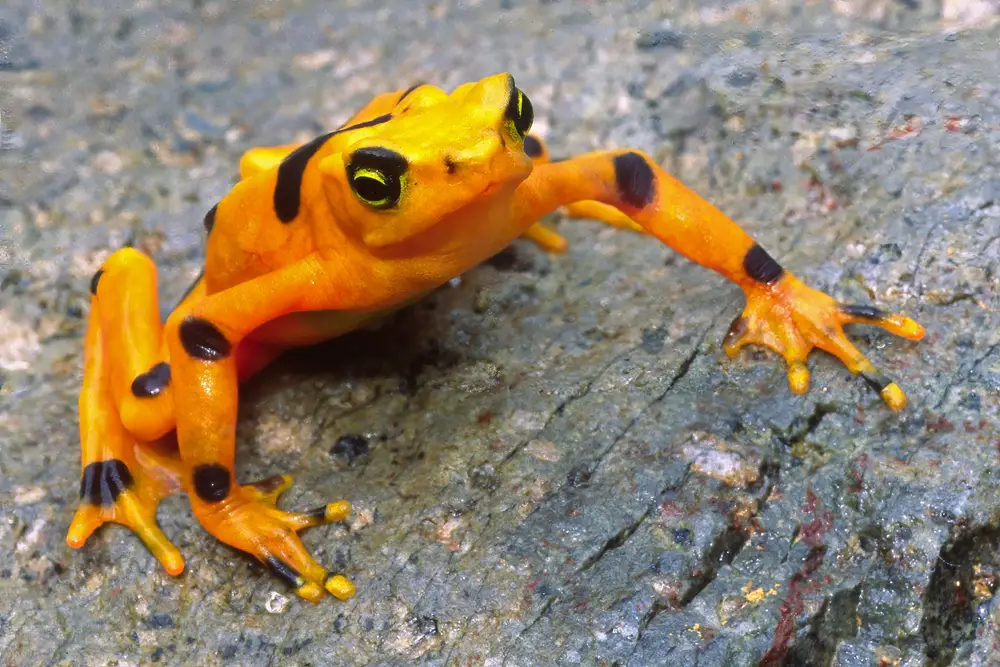
In the jungles of Colombia, the golden poison frog is a vibrant beacon of danger. Its skin contains batrachotoxin, a potent poison that can be lethal even in minute quantities. This adaptation serves as both a defense mechanism and a deterrent, warning predators with its bright coloration. The potency of its toxins has intrigued scientists, leading to research on the potential for medicinal applications.
But there’s a haunting beauty in the lethal touch of the golden poison frog. These small creatures remind us of the duality of nature’s gifts: capable of both harm and healing. The indigenous Emberá people have long used their toxins for hunting, illustrating a deep understanding of the natural world. As researchers continue to explore the potential of these toxins, the golden poison frog stands as a symbol of the delicate balance between life and death.
8. The Darwin’s Frog’s Parental Pouch
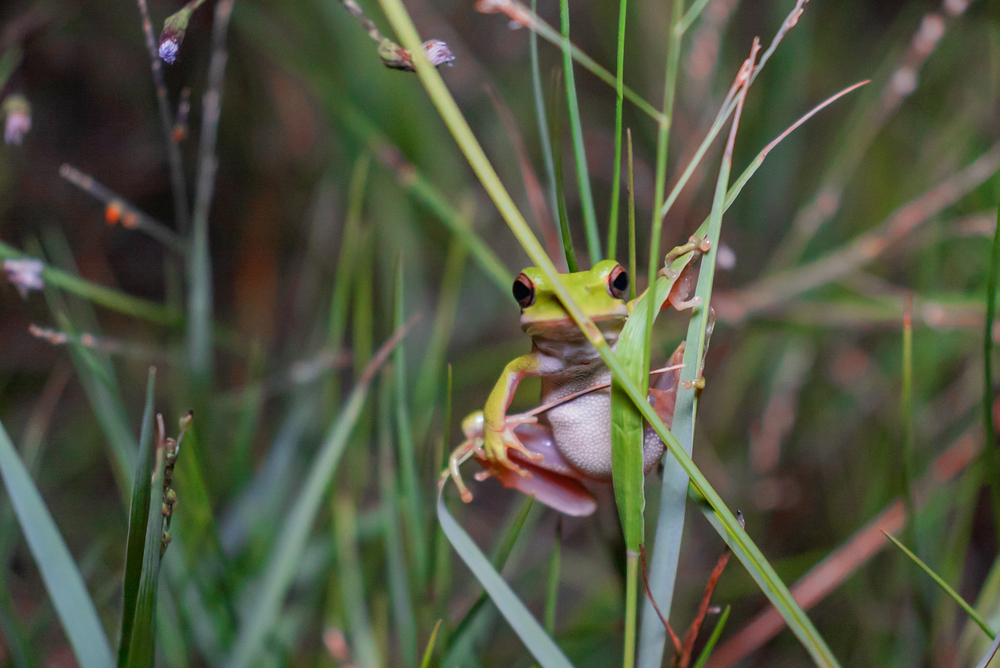
Darwin’s frog takes a leap forward in parental care with its unique approach to raising offspring. Males of the species incubate fertilized eggs within their vocal sacs, providing a safe haven until the young are ready to emerge. This adaptation offers protection against predators and environmental hazards, ensuring a higher chance of survival for the next generation. The process is a marvel of biological engineering, as the male frog balances the needs of his offspring with his own survival.
This remarkable form of parental investment speaks to the complexity of reproductive strategies in nature. By choosing this unconventional method, Darwin’s frog maximizes its reproductive success in a challenging environment. The adaptation also prompts us to reflect on the diverse ways life has evolved to nurture its young. In the quiet forests of Chile and Argentina, Darwin’s frog stands as a testament to the power of parental care.
9. The Hairy Frog’s Wolverine Talons
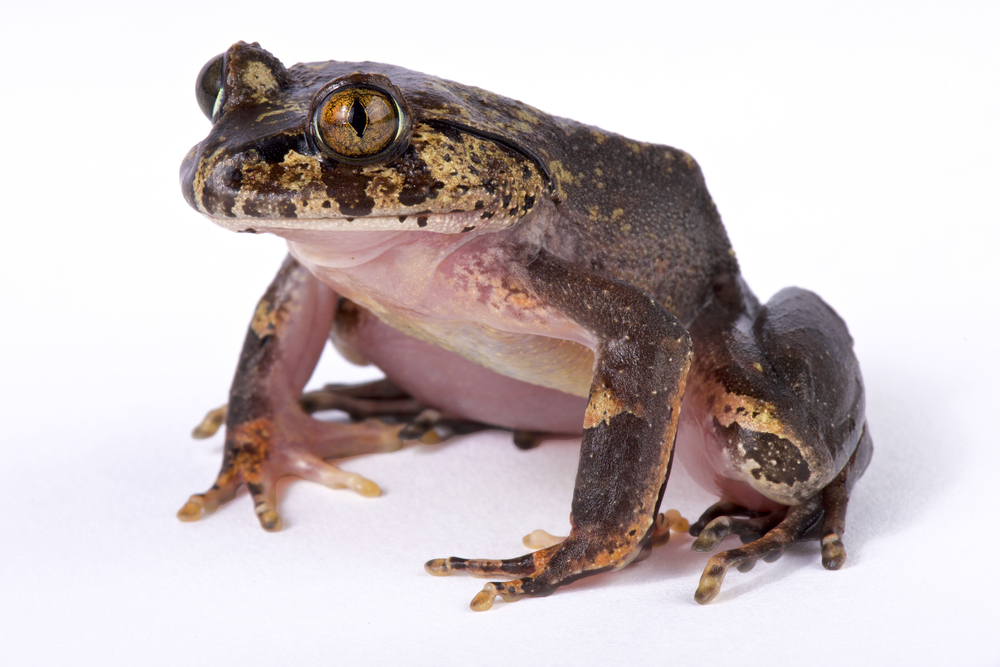
In a twist straight out of a superhero comic, the hairy frog boasts retractable claws that would make Wolverine proud. When threatened, this frog breaks its own bones to release these bony claws, a defense mechanism that deters predators with startling effectiveness. This adaptation is a gruesome yet fascinating display of how extreme measures can ensure survival. The hairy frog’s unusual defense strategy is a reminder of the lengths nature will go to protect its own.
But the story of the hairy frog doesn’t end with its claws. Named for the hair-like structures that appear on the males’ bodies during breeding season, these frogs are a study in unique adaptations. The structures increase surface area for oxygen absorption, allowing them to stay submerged longer while caring for their eggs. It’s a testament to the multifaceted nature of adaptations and the intricate balance of survival strategies in the animal kingdom.
10. The Rocket Frog’s High-Flying Leaps
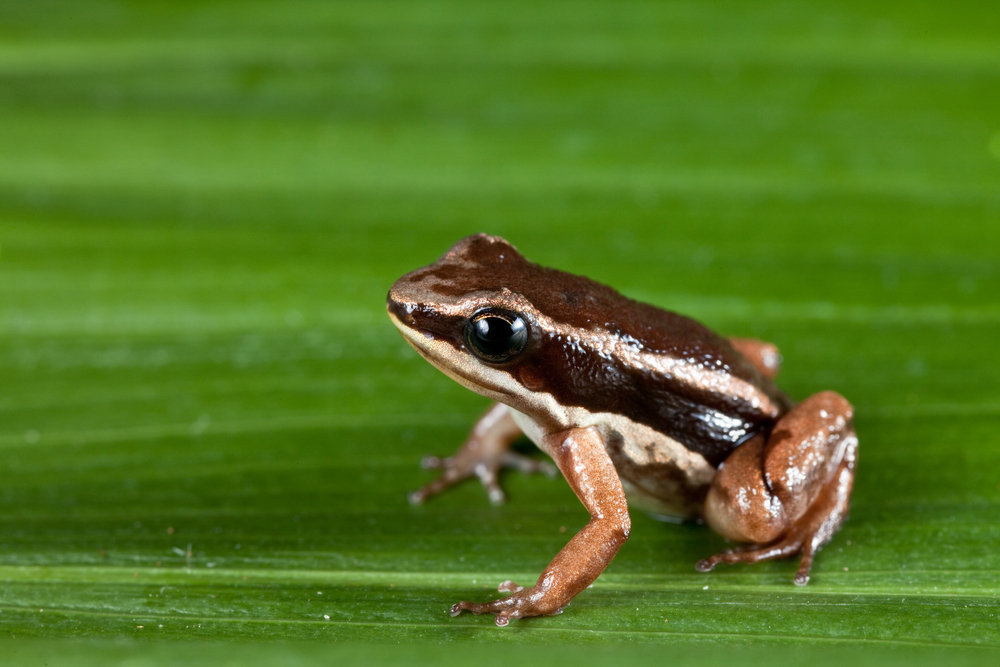
Defying gravity with every leap, the rocket frog earns its name with powerful jumps that can reach up to 2 meters. These frogs are built for speed and agility, with muscular legs that propel them across their environment in the blink of an eye. This incredible ability to leap great distances provides both an effective escape from predators and a means to traverse their habitat efficiently. It’s a jaw-dropping display of strength and coordination that underscores the athletic prowess of these amphibians.
The rocket frog’s aerodynamics are a triumph of evolution. By optimizing muscle power and limb structure, these frogs illustrate the pinnacle of jumping performance in the animal kingdom. Their leaps are not just a spectacle but a critical component of their survival strategy. As you watch a rocket frog in action, you’re witnessing a finely tuned machine, honed by millennia of evolution to master the art of the jump.
11. The Spadefoot Toad’s Underground Life
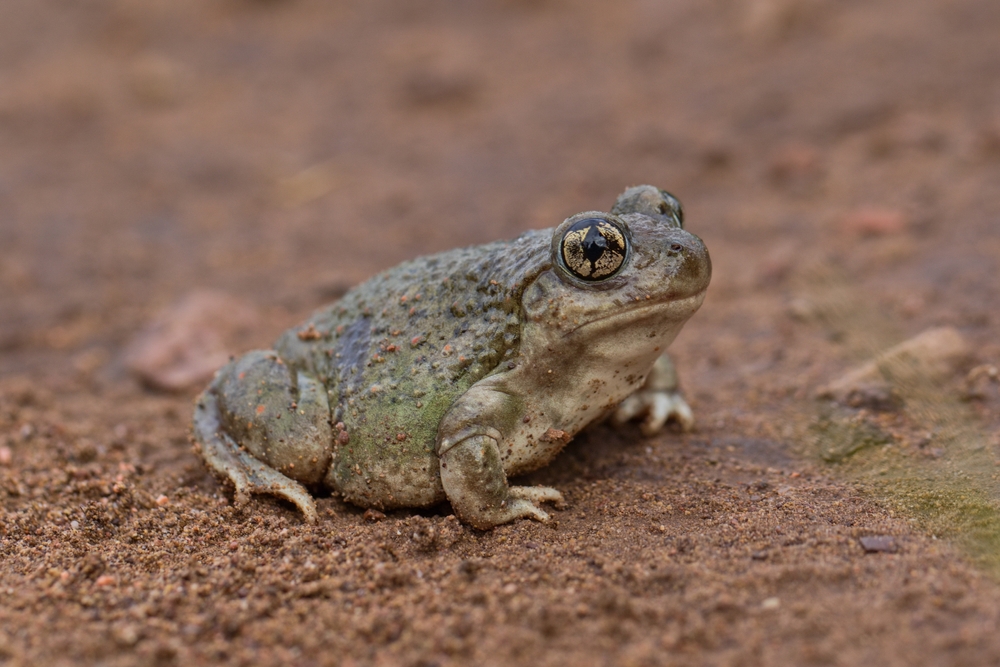
When the desert sun beats down, the spadefoot toad retreats to its subterranean sanctuary, a master of burrowing and survival. These toads spend most of their lives underground, emerging only during rare rains to breed and feed. Equipped with spade-like projections on their hind feet, they dig deep into the earth to escape the harsh surface conditions. This adaptation allows them to conserve moisture and avoid extreme temperatures, ensuring their survival in one of the planet’s most inhospitable environments.
The spadefoot toad’s ability to live underground highlights the importance of adaptability in challenging climates. By synchronizing their life cycle with environmental cues, these toads maximize their chances of reproductive success. This strategy speaks to the resilience of life in the face of adversity, as well as the innovative solutions organisms develop to thrive. In the arid landscapes they call home, the spadefoot toad is a testament to the power of adaptation and resourcefulness.
12. The Surinam Toad’s Back-Birthing Method
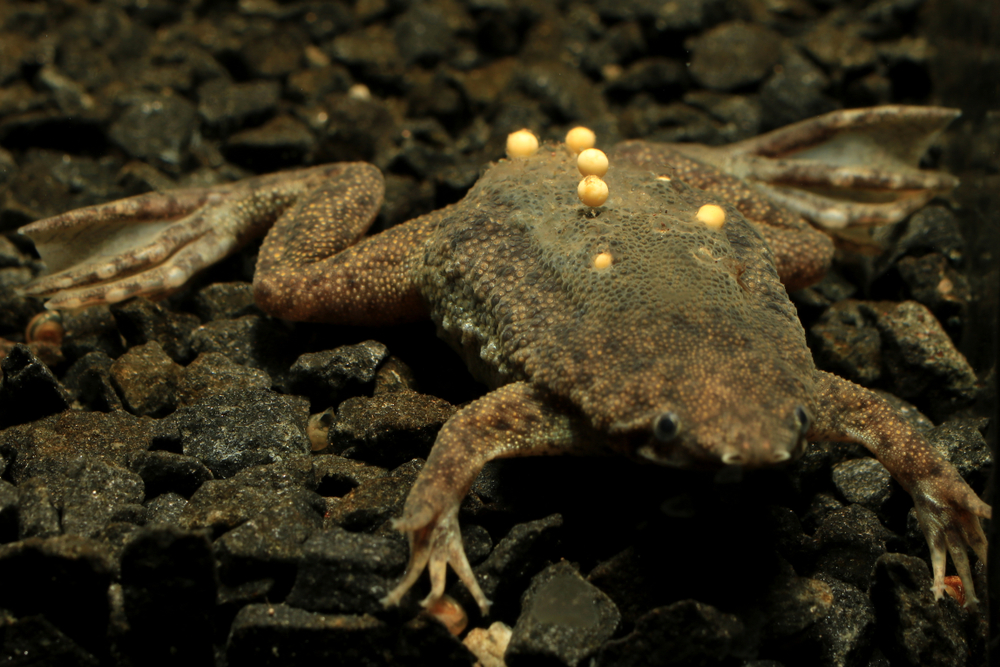
In the depths of South America’s waterways, the Surinam toad presents a birthing method that challenges conventional norms. Female Surinam toads carry their young in pockets on their backs, where the eggs develop into fully formed toadlets. This process, known as “pipa pipa,” is a captivating blend of protection and development, ensuring the offspring’s safety in a world fraught with danger. The sight of these toadlets emerging from their mother’s back is a unique spectacle, highlighting the diversity of reproductive strategies in the animal kingdom.
This extraordinary approach to raising young offers advantages in terms of predator avoidance and environmental pressures. By carrying their offspring, Surinam toads reduce the risk of eggs being eaten or harmed. It also illustrates the depth of parental care and investment in the amphibian world. The Surinam toad’s back-birthing method stands as a remarkable example of nature’s creativity and the myriad ways life has adapted to ensure the survival of future generations.
13. The Red-Eyed Tree Frog’s Startling Stare
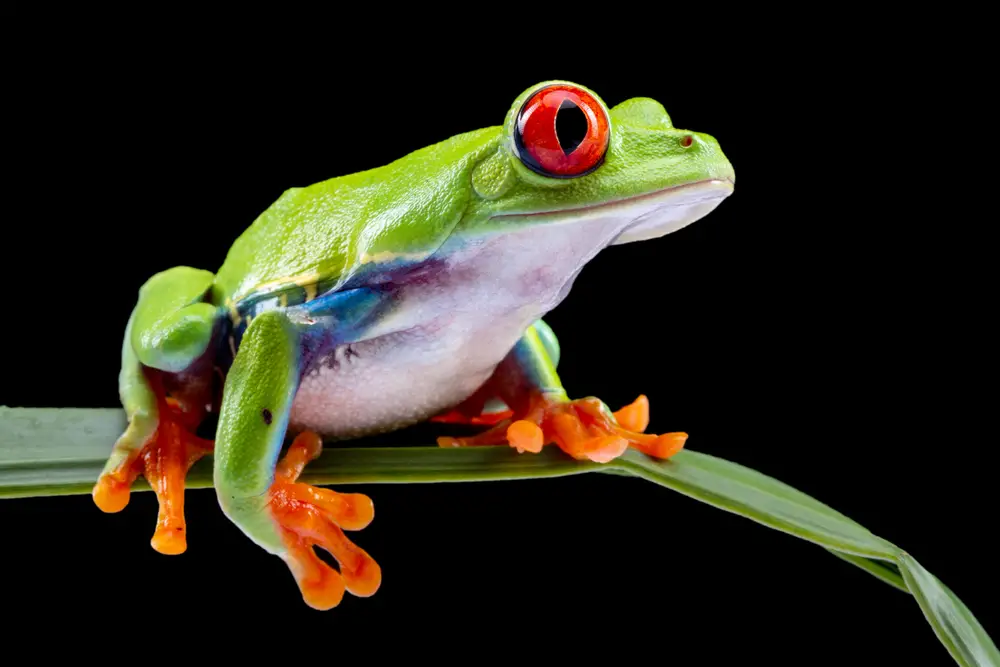
In the dense foliage of Central American rainforests, the red-eyed tree frog employs a simple yet effective survival strategy: shock and awe. With its vivid red eyes and vibrant green body, this frog startles predators, buying precious seconds to escape. This sudden flash of color serves as a defense mechanism, disorienting threats and providing the frog with a crucial window to flee. The red-eyed tree frog’s startling stare is a masterclass in the art of deception and survival.
But there’s more to this frog than its striking appearance. Its sticky toe pads and excellent climbing skills allow it to navigate the complex arboreal environment with ease. This adaptability ensures it can find food and mates while avoiding ground-dwelling predators. The red-eyed tree frog’s combination of visual theatrics and physical prowess underscores the intricate balance of form and function in the natural world.
